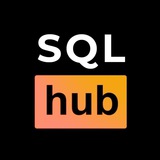tg-me.com/sqlhub/1887
Last Update:
🛠️ История создания “storage-agnostic” message queue
Контекст:
Работая на Go, автор вдохновился инструментами из Node.js экосистемы (BullMQ, RabbitMQ) и захотел сделать что-то похожее, но с нуля, без зависимостей. Так родилась идея — сначала он создал Gocq (Go Concurrent Queue): простую concurrent-очередь, работающую через каналы.
⚡ Основная проблема
Gocq отлично работал в памяти, но не поддерживал устойчивое хранение задач.
Автор задумался: а можно ли сделать очередь, не зависящую от конкретного хранилища — так, чтобы её можно было подключить к Redis, SQLite или совсем без них?
🧱 Как это реализовано в VarMQ
После рефакторинга Gocq был разделён на два компонента:
1) Worker pool — пул воркеров, обрабатывающих задачи
2) Queue interface — абстракция над очередью, не зависящая от реализации
Теперь воркер просто берёт задачи из очереди, не зная, где они хранятся.
🧠 Пример использования
• In-memory очередь:
w := varmq.NewVoidWorker(func(data any) {
// обработка задачи
}, 2)
q := w.BindQueue()
• С SQLite-поддержкой:
import "github.com/goptics/sqliteq"
db := sqliteq.New("test.db")
pq, _ := db.NewQueue("orders")
q := w.WithPersistentQueue(pq)
• С Redis (для распределённой обработки):
import "github.com/goptics/redisq"
rdb := redisq.New("redis://localhost:6379")
pq := rdb.NewDistributedQueue("transactions")
q := w.WithDistributedQueue(pq)
В итоге воркер обрабатывает задачи одинаково — независимо от хранилища.
✅ Почему это круто
• Гибкость: адаптеры позволяют легко менять хранилище без правок воркера
• Минимальные зависимости: в яд
📌 Читать
BY Data Science. SQL hub

Share with your friend now:
tg-me.com/sqlhub/1887
